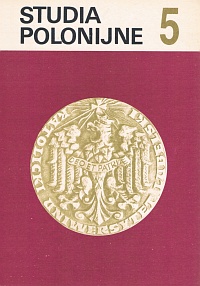Leadership in contemporary Polish-American community
Main Article Content
Abstract
The problem of leadership among the Polish-Americans as well as among other American ethnic groups is very difficult to discuss because there is really no literature on the subject nor any readily available primary data which could be used to draw upon for relevant information. Thus, all that could be done is to characterize Polonia as an ethnic community and to describe briefly several types of leaders which can be distinguished within it.
Polonia of today may be described as somewhat inchoate ethnic community, basic foundations of which were laid during the period of great influx of Polish immigration early in this century. Before World War I, it consisted of communities of variable size, which were to a great extent culturally self-sufficient. The organizational structure created by Polonia has been truly exceptional. It continues to exist today and is so impressive that it hides from view the fact of the far reaching assimilation of the masses whose Polish culture was reduced to certain sentiments and some residual traits.
The supra-organizational structure of the Polish-American community, which existed before the restoration of independent Poland, lost its raison d’etre during the process of its transformation into Polonia of today, that is only partially organized loose community of Americans who still wish to be identified with their ethnic origin. For this reason alone it is difficult to assess the achievements of its leaders, whoever is to be included in this category. The evaluation of their achievements would necessarily depend on what were or are their aims.
These aims were identified in 1934 when the representatives of the two largest Polish-American organizations declared officially in Warsaw that the Americans of Polish descent are an inalienable part of the American nation. Since that time the goals of Polonian leadership were neither defined nor publicly discussed in any fashion. In fact, it is not even clear that the process of cultural evolution which Polonia was undergoing, and which by now is practically complete, was guided in any way by those who might be regarded as its leaders.
Polonia of today could hardly be said to have leaders on a national scale. It is not a unitary community with a sense of direction. It has no clear boundaries and no policy of its own.
It is, of course, not leaderless, but its leadership has neither ideological unity, nor centripetal structure. It is manifested rather in several independent forms, of which at least four categories may be distinguished.
To the first of these belong the leaders of large fraternal associations, from which the membership of Polonia’s central inter-organizational body - Polish-American Congress - is recruited. These people must be regarded as official spokesmen for Polonia. They are often quoted as such in the American press and other media. However, their social influence is severily circumscribed by an extreme superficiality of their personal contact with the masses of Polonia. Their main concern is their success as managers of associations which they control and which long time ago acquired the character of purely business enterprises.
The second category is represented by the leaders of cultural associations, whose importance in the life of Polonia is perhaps not yet fully appreciated. They attempt te satisfy certain deeper needs of the Polish-American community, such as a desire for a synthesis between American and Polish values and traditions. As members of American intelligentsia representing universities and professions, these people form an important link between Polonia and American cultural elite. They feel responsible for bringing Polish culture and its contributions to European civilization to the attention of other groups in American society.

